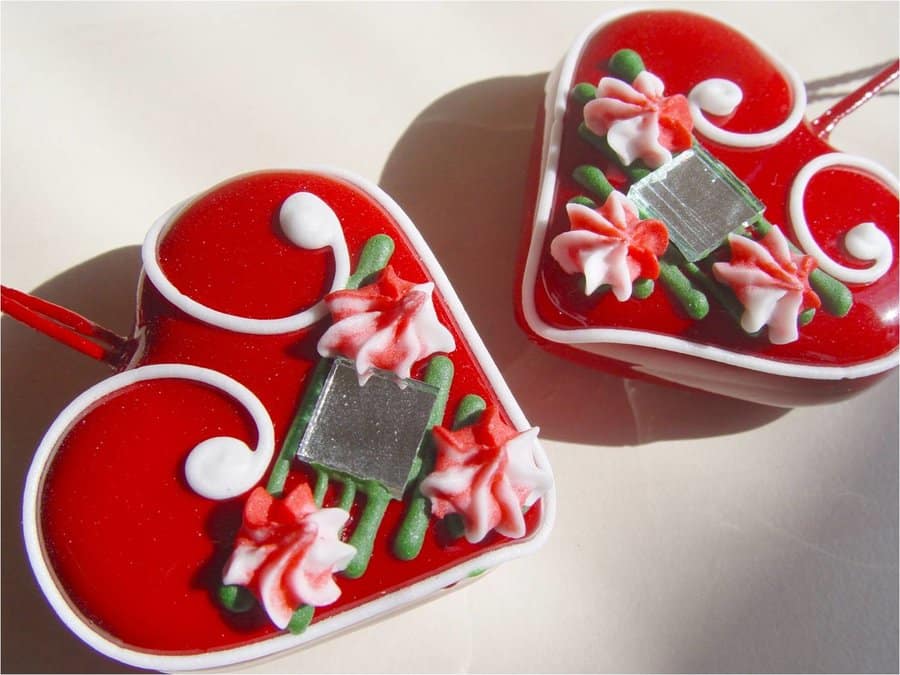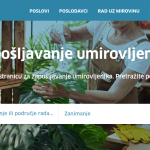Rich heritage that Croatian people are proud of can be seen in the great variety of souvenirs the country has to offer. They represent the local identity, unique handicraft, the wisdom of ancestors, as well as creativity of their modern heirs. Moreover, souvenirs bring back nice memories from your travels, so choose them wisely!
- Introduction to Croatian souvenirs
- Zagreb and Northwestern Croatia
- Slavonia and the Danube region
- Gorski kotar, Rijeka and Kvarner
- Istria
- Lika
- Dalmatia
Introduction
Each Croatian region, sometimes even each town or island, has its own characteristic souvenirs. Of course, the edible ones come to mind first, but let’s stick to things that are not food or drink. In all parts of the country, souvenir shops and stands pop up everywhere where there are… well, tourists. Expect them in large numbers near famous and frequented sights, in busy streets and squares, on the waterfront. Don’t be too lazy and fall for cheap fridge magnets, fake Croatian football jerseys or kitschy pottery actually made in China.
Sometimes it’s best to check if there’s a souvenir section in the local tourist information center, or at places like airports, ports, train and bus stations. Legit shops and stands certainly do exist, but try to find them beyond the flashy joints displaying hundreds of items of all kinds. Sometimes nice handicraft stands and shops can be found around farmers’ markets. Smaller artisan shops and ateliers may be harder to spot but are definitely worth more than generic mass-produced mementos.
Zagreb and Northwestern Croatia
As the capital and an increasingly popular destination all year round, the city with more than 900 years of official history has a lot in store. Most souvenir shops are in Tkalčićeva and Radićeva Street, near the Cathedral and on Dolac Market. Stepping into the iconic Nama department store on the corner of Ban Jelačić Square and Ilica is also a good idea. The building is a remnant of history itself, and there’s a solid souvenir section on the ground floor.
Licitar hearts
There’s no question about what is Zagreb’s souvenir number one. Little red hearts with cute decorations follow you everywhere, starting from the local tourist board’s logo. It corresponds perfectly with Zagreb’s slogan: a city with a million hearts. The heart is called licitar, belongs to entire northwestern Croatia, and dates back centuries. Sweet honey dough is baked to make them, but they’re not meant to be eaten. Instead, the licitar heart has always been a gift or ornament for special occasions. UNESCO recognized how special it is and put gingerbread craft from this area on its List of the Intangible Cultural Heritage.
Do try to find a real licitar, not a plastic or plaster imitation. In high season, there’s usually a little stand selling them next to the Lotrščak Tower. In the town of Samobor, a popular day-trip spot, visit a traditional craft shop like Oslaković or Arko and learn more about this art. Usually, these craftsmen also make honey-based products and candles, the same way as a hundred years ago. Another local treasure protected by UNESCO that you can find on Zagreb’s Dolac market are traditional wooden toys from Zagorje region. Compared to modern toys they are very quaint but charming and functional.
Croatian neckties
In the city center, you’ll see a number of shops specialized in neckties, and there’s a good reason for that. It could just be the most important Croatian invention that conquered the world. The modern necktie originates from cravat, which comes from a silk neckband worn by Croatian soldiers fighting in France during the Thirty Years War, in the 17th century. A fancy handmade silk necktie or a scarf with Croatian motifs from a prestigious manufacturer like Croata makes a really special gift. Visit their showroom and shop in Oktogon passage for the largest selection and personal touch.

You might notice that most farmers’ markets in Zagreb have the same signature red parasols with a recognizable pattern. It comes from Šestine umbrella, part of the local folk costume. Šestine, once just a village, is now a neighborhood in north Zagreb. You can buy the original umbrella from the only umbrella manufacturer that still makes them by hand, Cerovečki. Tomislav is happy to share all the secrets of this rare craft in his shop in Ilica Street. Cerovečki’s recent invention is Kaplja raincoat with the Šestine pattern. In the same passageway, there’s a shop called Zagreb Crafts, displaying various products of local family-owned crafts. Like the replica of the first mechanical pencil developed by Slavoljub Penkala in 1906. See what happens when tradition meets modern design in cool shops like Take Me Home, right next to the Funicular.
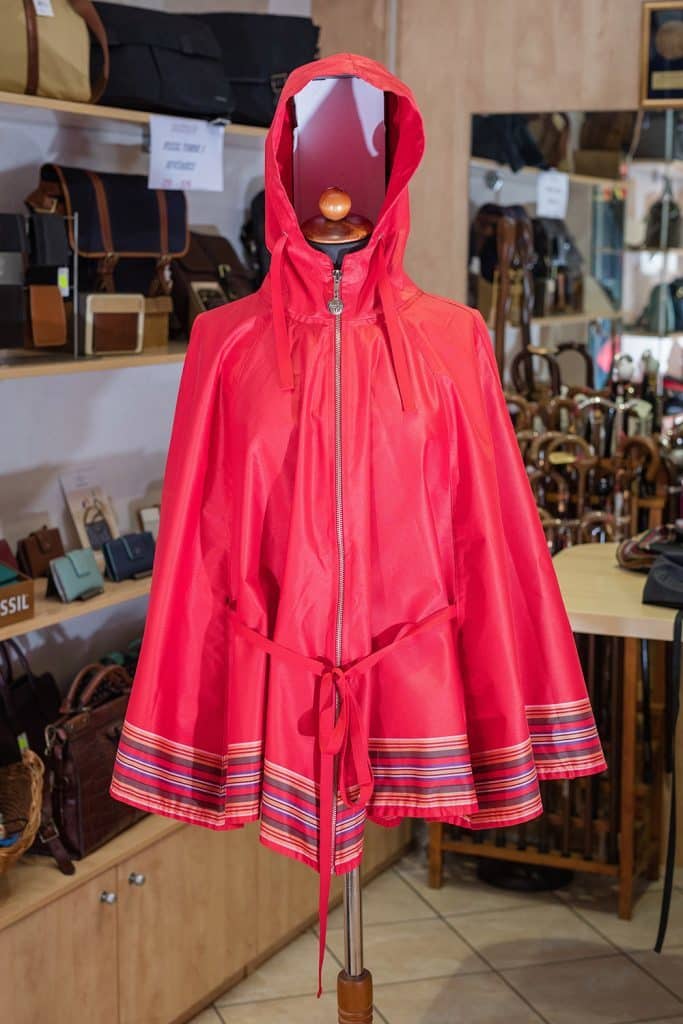
Zagreb surroundings
Cities and small towns in Zagreb County are full of souvenirs with folklore background and ethnographic touch. Velika Gorica has a beautiful new Tourist Information Center with the most representative local products on display. In Samobor and Sveta Nedelja, look out for a unique piece of folk jewellery called kraluš. This traditional necklace consists of colorful pearls and beads on strings lined in elaborate patterns. The pattern used to be a code that reveals the age, marital and social status of the woman wearing it.
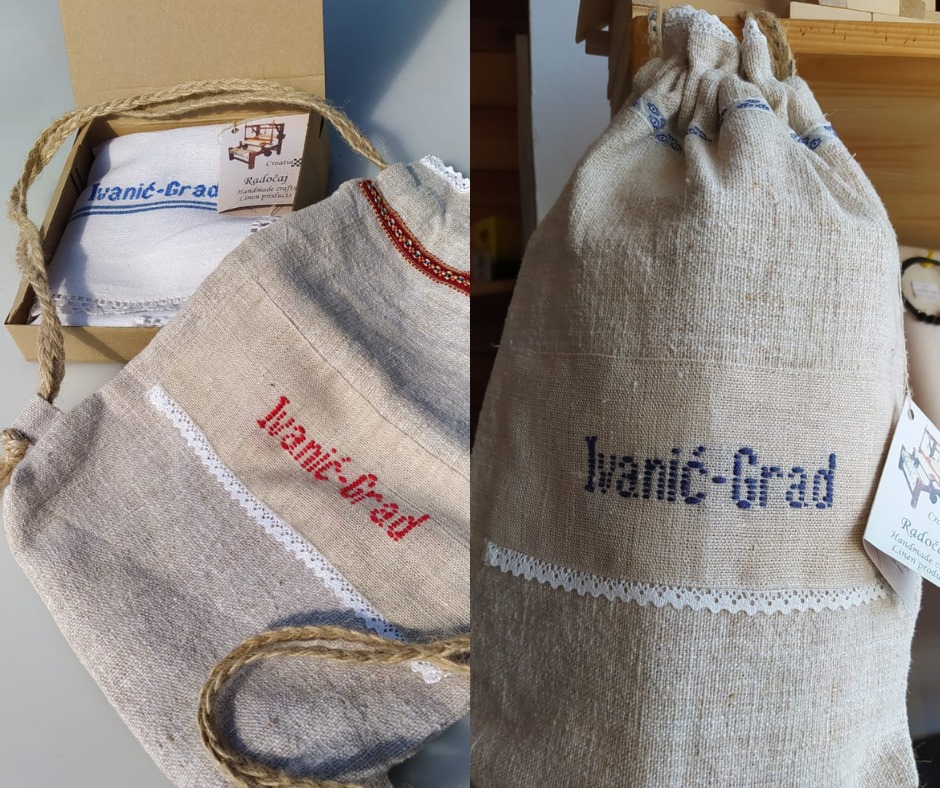
In the souvenir department, it is especially nice to see some old, almost extinct customs brought back to life. Ivanić Grad was once surrounded by flax fields and processing linen was a common craft. Today, the traditional linen towel has seen its revival as the town’s signature souvenir, available at the local Visitor Center. On the other hand, in Lepoglava near Varaždin, they have never given up on their world-renowned lace making skills. Lepoglava lace is still a synonym for exquisite beauty with the charm of old times.
Slavonia and the Danube region
In the eastern region of Slavonia, it is not unusual to see people wearing the famous Slavonian woollen jacket, part of the men’s folk costume, casually in the streets. It even comes in toddler sizes nowadays. The same goes for the Slavonian hat, black with a ribbon in Croatian colors, red, white and blue. The women’s counterpart is a decorated folk shawl that you’d wear over the shoulders or around the head. You can find the best quality traditional clothing items in specialized shops like Rukotvorine in Osijek. Something completely different and modern is Lega-lega design studio, with Osijek-style urban apparel.
Rakija
As soon as you set foot in this region, you will be offered strong Slavonian plum or pear brandy called rakija. A traditionally decorated set of rakija bottle and matching shot glasses is a standard household item and one great souvenir. Gift shops at the Museum of Slavonia and the Archaeological Museum in Osijek are well-supplied with irresistible little things reminding you of Slavonia. For some more exotic options coming from the east of Croatia, local farmers’ markets and flea markets guarantee good finds.
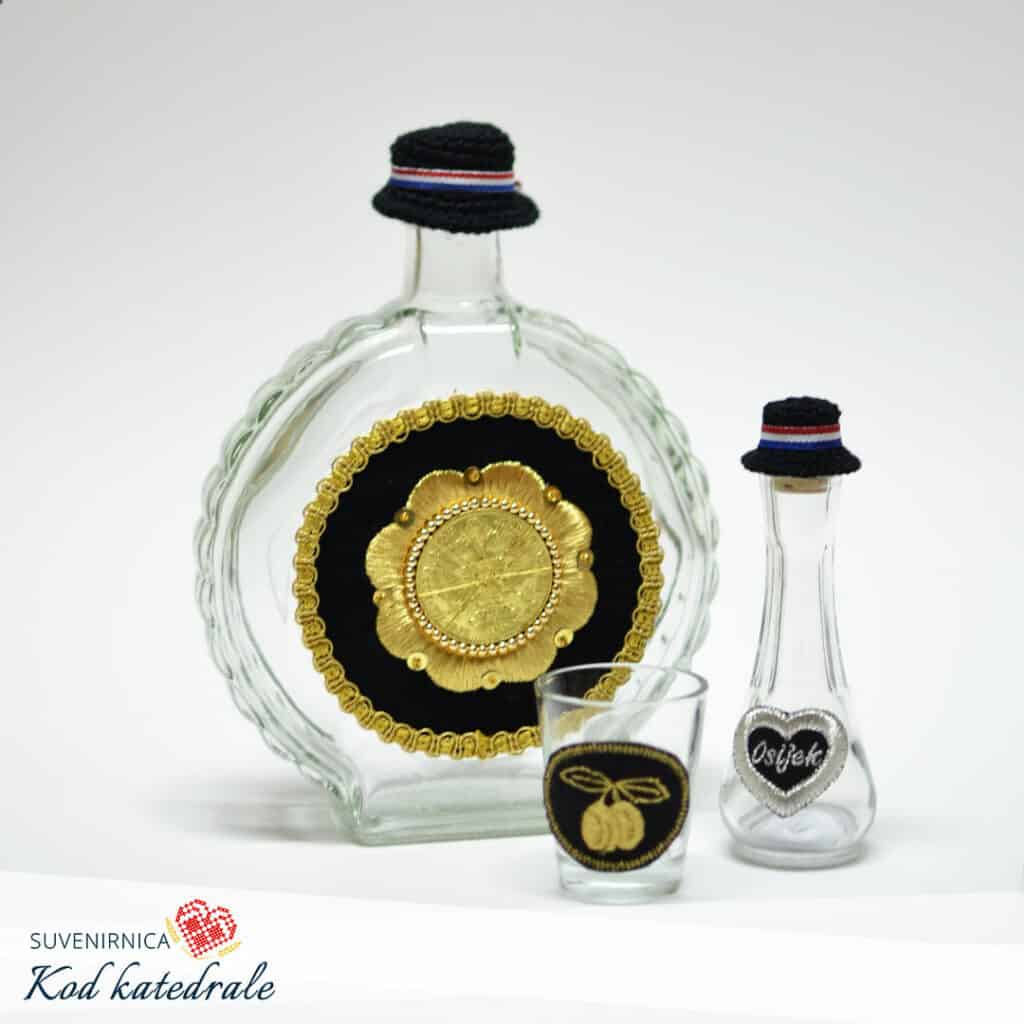
In Vukovar, must-have items include a replica of the Vučedol Dove, a bird-shaped vessel from the Eneolithic, and of the iconic Vukovar water tower, a symbol of the city’s struggle in the Croatian War of Independence. Vukovar is also home to Borovo, a shoe factory that has been producing the iconic Startas sneakers since 1976. Once they were just an ordinary piece of footwear in Yugoslavia. These days, they are undergoing a revival with cool new designs and were even featured in Vogue.
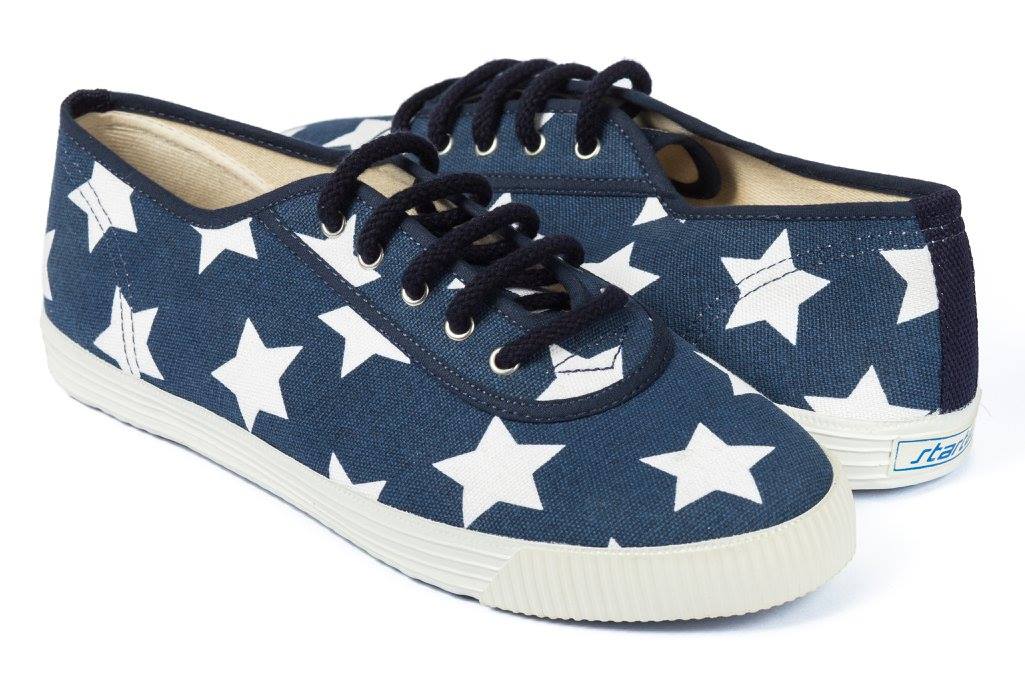
Gorski kotar, Rijeka and Kvarner
Gorski kotar is a region of pristine woods and mountains, Rijeka is a big port town and European Capital of Culture for 2020, and Kvarner stands for the coastline around it, including northern Adriatic islands. It’s an area of diversity, which can also be seen in the selection of souvenirs.
Apart from forest fruits and artwork in wood, Gorski kotar offers a rather interesting souvenir. As much as it looks provocative and X-rated, it’s actually rooted in tradition. Nakurnjak is the Croatian name for an intimate item also known as willy warmer or cock sock. It’s cute, woolen and apparently quite handy in the region of high mountains and long winters. Today it is made by a local knitting club called Mrkopaljske vunarice. If you run out of ideas for your husband’s birthday or a wedding anniversary gift, give it a thought.
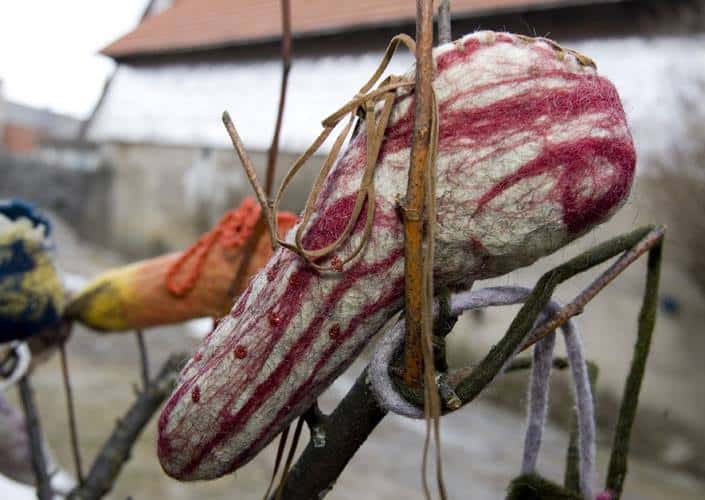
Rijeka
Lots of people associate Rijeka with the bright and colorful paintings of local artist Vojo Radoičić. His distinct work is now the theme of numerous Croatian souvenirs. Something more traditional and historic (and maybe somwhat questionable) comes in the shape of black Moor with a white turban. Morčić is the name for this good luck charm, symbol of Rijeka and its Carnival. Most often it comes in shape of earrings, but now you can also have a Morčić-shaped USB stick.
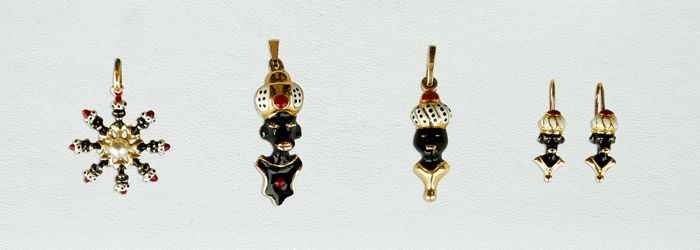
Paying respect to Rijeka’s industrial history, torpedo is now becoming a popular souvenir motif. The first torpedo factory in the world was founded here in 1867. The nearby island of Krk used to be the hub of Glagolitic culture, based on the oldest known Slavic alphabet from the 9th century. Replicas of historic inscriptions, like Baška tablet, or pendants with these ancient letters are the obvious choice. The island of Lošinj takes pride in the Apoxyomenos, an Ancient Greek bronze statue of an athlete discovered here. It’s kept in its own museum in Mali Lošinj, with a nice souvenir shop.
Istria
Istria is among the most developed destinations in the country when it comes to tourism. Its lifestyle and landscape has earned it the nickname “the Tuscany of Croatia”. Istria is famous for its wines, brandies, pasta, olive oil and truffle products, but what about regular, inedible souvenirs? Of course, there are loads of typical items like keyrings, fridge magnets, T-shirts, towels, mugs, and so on. Dig deeper and you will also find some original, handcrafted stuff.
For art lovers, the tiny medieval hilltop town of Grožnjan is the place to go. It is full of art galleries and ateliers, so beautiful and unique artwork, home decorations and souvenirs are all around. The city of Pula is proud of its ancient past during the Roman era, so you will come across a lot of replicas of historic monuments and archaeological finds. Of course, the most important is the famous Arena, a well-preserved Amphitheater built in the 1st century AD. In Rovinj, the pearl of the Istrian coast, the obvious choice is a model of the traditional wooden boat called batana. Poreč is called the town of mosaics, and there are suitable souvenirs inspired by this old art form. Especially from the Euphrasian Basilica, the only Istrian entry on the UNESCO’s World Heritage List.
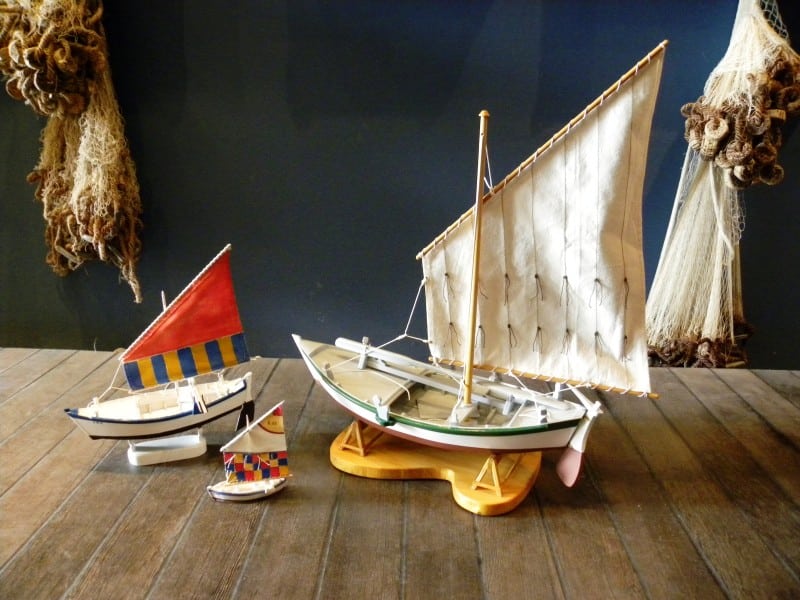
Olives and supa
Istria is full of olive groves, which means there’s a lot of olive wood just waiting to be turned into something nice. In many souvenir and gift hops you can find jewelry and kitchen utensils made of distinctive olive wood. One such place, with an interesting and interactive permanent exhibition, is the House of Istrian Olive Oil in Pula. Scattered around the countryside are countless little round traditional stone huts called kažun. This ancient structure was used as a shelter by shepherds and farmers. Little models of kažun are a common and popular souvenir.
Ever heard of istarska supa, or Istrian soup? It’s more a drink than a dish, actually. Toasted bread is soaked in a mixture of boiled olive oil and Teran red wine, seasoned with sugar and pepper. It’s a social thing, and the idea is to share the supa. Traditionally it comes served in a rustic ceramic jug called bukaleta. Even if you never use it to make istarska supa, bukaleta is a Croatian souvenir with one hell of a story.
Lika
Lika is the vast green mountainous region, dominated by the mighty Velebit Mountain. Of course, it’s famous for the Plitvice Lakes National Park. Most souvenirs are somehow related to Plitvice, naturally also the place with the highest concentration of shops aimed at travelers in this area. In 2018, the National Park even got its own perfume. Its fragrance is based on local plums, moss and orchids. It will take you back to the Lakes in one sniff!
But what else is there apart from the waterfalls and bears? Excluding cheese, brandy, lamb and potatoes. The symbol of the region and local identity is the traditional Lika cap. It’s red and round, with a flat top, black sides, and a black tassel. Not really a fashion statement, more of a trophy for your cupboard. Or a nice accessory to hang from the rearview mirror. Lika is the most sparsely populated Croatian county. However, creative people who make artisan jewellery and gifts still live there. Of course, they take inspiration from the local tradition and folklore, like Danijela in Otočac.
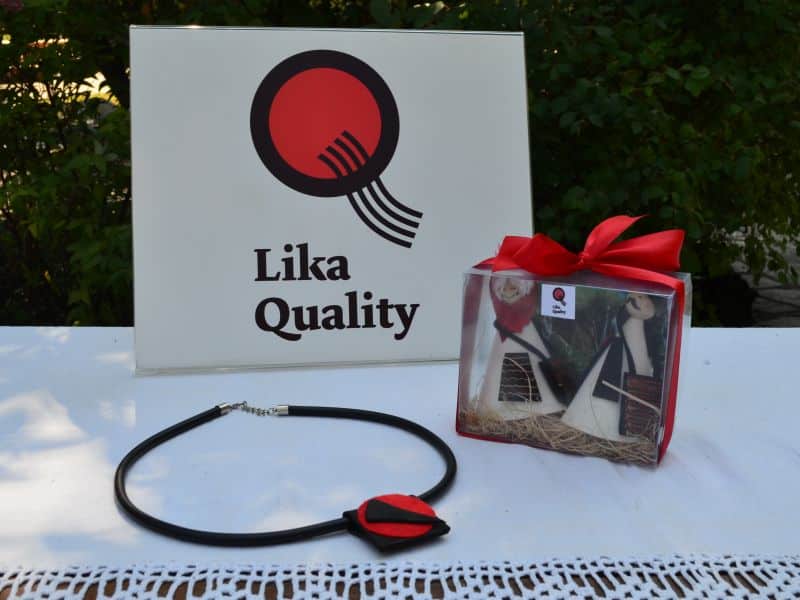
Socks or slippers are definitely not on top of everyone’s list of favorite gifts, but the ones from Lika are just beyond cool. Cold winters and lots of sheep gave birth to thick woollen socks and traditional slippers called coklje. They do look like something only a grandma would wear, but nothing works better to keep your feet warm and comfy. For something with a more modern appeal, remember that Nikola Tesla, one of the world’s greatest inventors, came from Lika. Visit Nikola Tesla Memorial Center in Smiljan and grab a Tesla-themed Croatian souvenir in honor of this genius.
Dalmatia
For many visitors, Dalmatia embodies Croatian tourism. This is where it’s all at; the sea, the beaches, old historic towns and beautiful islands. With the increase of touristy spots comes the exponential increase of tacky souvenirs, but also some great catches. Due to its Mediterranean setting, souvenir motifs include a lot of the usual seaside iconography – fish and sea life, boats, donkeys, seagulls…
Zadar
Zadar, the oldest continually inhabited Croatian city, has a wide choice of portable memories. There are many historical souvenirs, especially modeled after the iconic Church of St. Donatus. The Archaeological Museum and The Museum of Ancient Glass are the best places to find these. Zadarska barka, a ceramic replica of old wooden boats used to carry people or goods across the port, is also popular. A touch of creativity is obviously present in a recently launched souvenir-to-go called St. Donat Kit. You get a bottle of local wine and tiny ceramic parts. After you finish the wine, you use the cork and the ceramics to assemble your own little Church of St. Donatus.
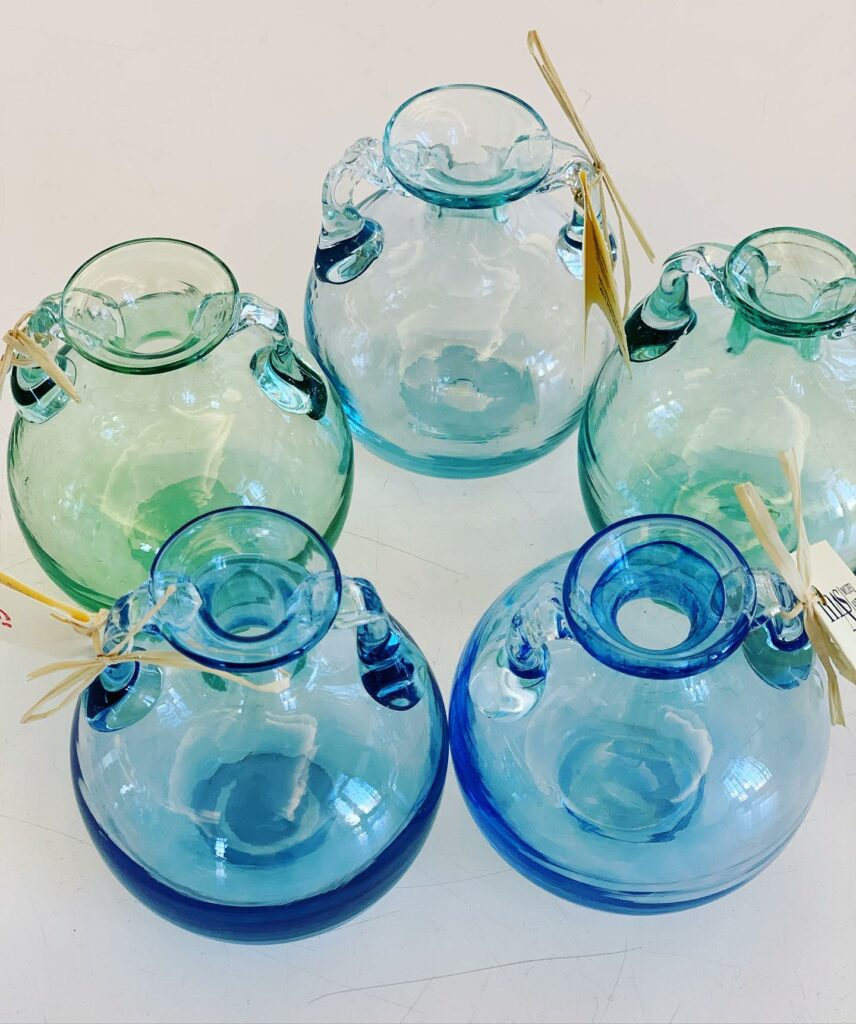
The island of Pag is famous for its lace. Benedictine nuns keep the tradition that dates to the age of Renaissance alive. Along with Lepoglava and Pag, the third Croatian lacemaking school included in UNESCO’s list of intangible cultural heritage comes from the island of Hvar. What’s so special about it? It uses thread from agave leaves. Hvar is also the island of lavender, so expect plenty of fragrant Croatian souvenirs in different shapes and sizes.
Šibenik, the third largest Dalmatian town, has a unique piece of jewelry called Šibenski botun – Šibenik button. Made in filigree technique, in the past it was part of men’s folk costume, and now it comes as pendant, earring, necklace, ring etc. The red and black Šibenik cap is another symbol of the city stemming from local folklore. The island of Zlarin, near Šibenik, has a long tradition of coral diving. Jewelry made of red coral from the Adriatic is a special and valuable souvenir. Be sure to find a certified original, like in Zlarinka coral shop.
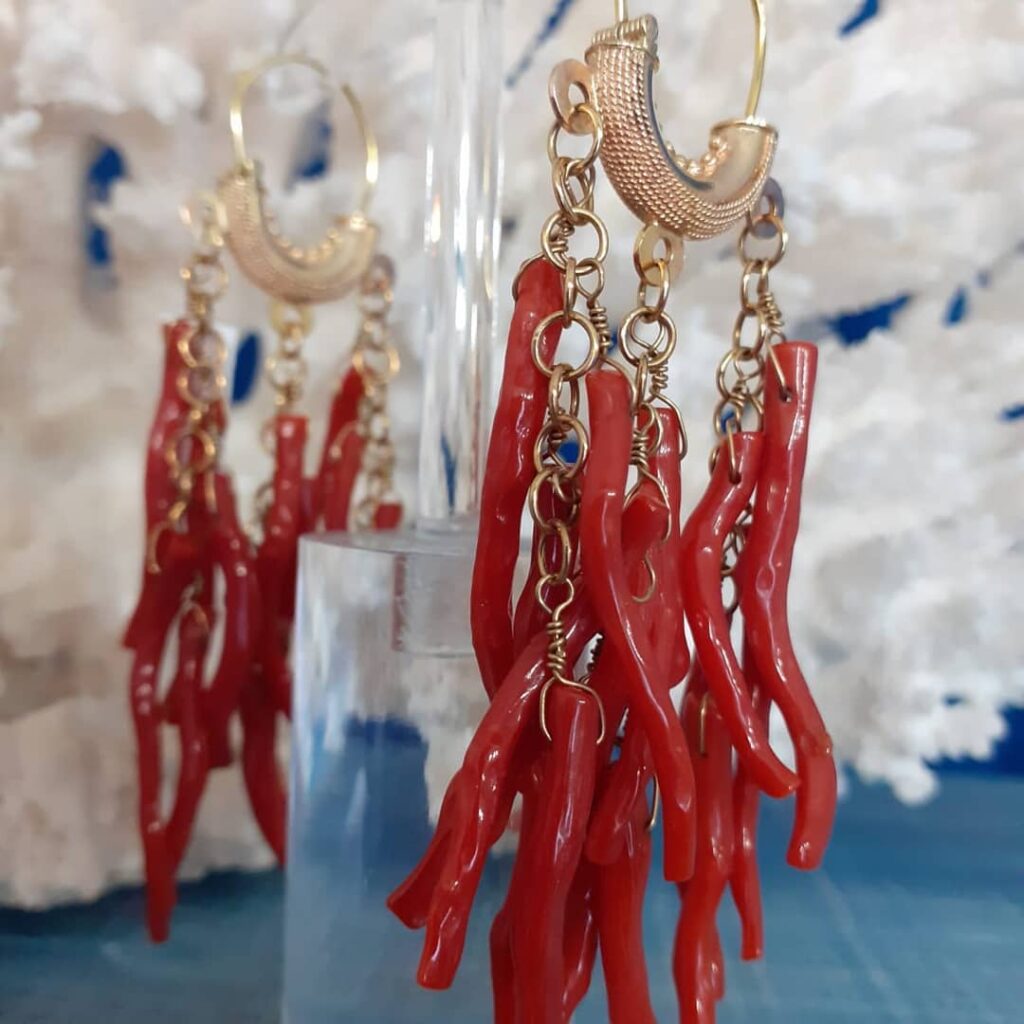
Split
Split, the largest city in Dalmatia, can be a bit chaotic, not only when it comes to traffic. The selection of souvenirs in the old town is such that the most precious and original pieces of art coexist next to the worst tasteless products imported from who knows where. The Cellars of Diocletian’s Palace are a good place to start your search. Alleys and streets around the Palace do hide some nice shops with works of local artists and designers. The shop at the Atelier of the late Vasko Lipovac is full of local flavor. New generations love funny designs by Tisja Kljaković, a Croatian souvenir sometimes understood only by locals.
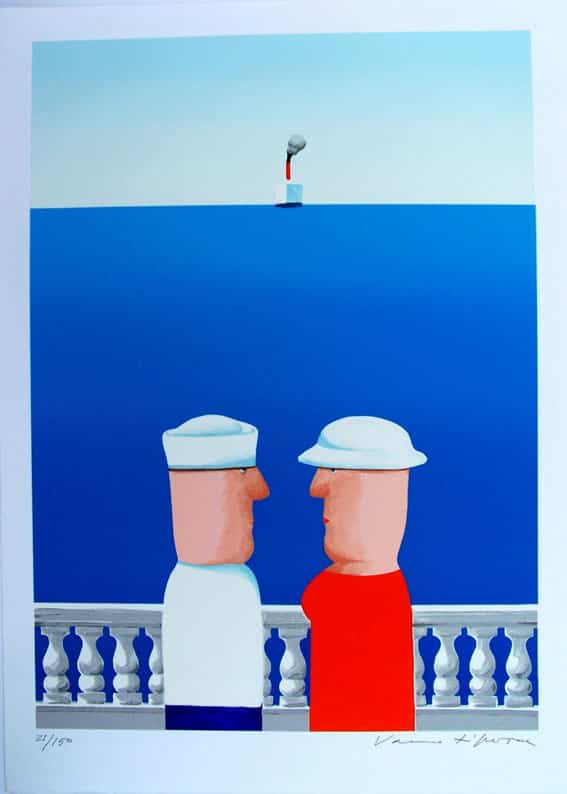
Across Split, the quarries of the island of Brač have provided high-quality stone for some very important buildings, including the White House. In the lovely small town of Pučišća there is a still active Stonemason School. Naturally, those stonemasons use the same stone to make a wide array of souvenirs and gifts. On the island of Korčula, the name and image of Marco Polo pops up a lot, and you can even visit his supposed birth house. Although the theory that the Polo family comes from Korčula is somewhat shaky, it’s definitely good for the local souvenir business.
Dubrovnik
When you reach Dubrovnik, perhaps the most famous of all Croatian cities, there will be a lot of pricey temptations. Local artwork is plentiful, from modern to old-school and traditional. If you like jewellery, Konavle earrings are a beautiful combination of traditional and luxurious Croatian souvenir.
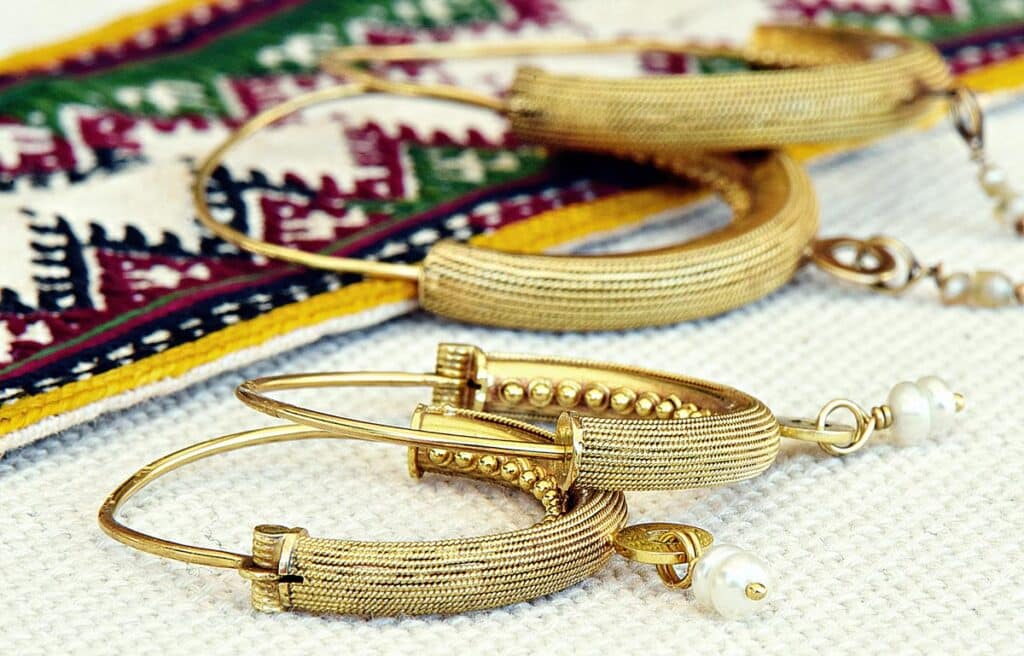
The rural area of Konavle is famous for traditional embroidery. You can find wonderful handmade tablecloths on Dubrovnik’s market. If you’ve seen Game of Thrones, many places will seem familiar, because Dubrovnik was one of the main filming locations. Obviously, there is a lot of GOT memorabilia in souvenir shops. In Dubrovnik City Shop you can sit on a replica of the Iron Throne (the original from the TV series is on Lokrum Island).
During high season, it is not unusual to see local kids selling seashells and seashell art on improvised stands along the waterfront. Although not particularly extravagant or intricate, sometimes this may just be the best souvenir you can buy to make everyone happy. You get a lovely little piece of the Adriatic, while the budding entrepreneurs get some well-deserved pocket money.

